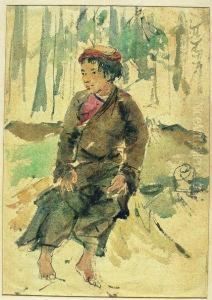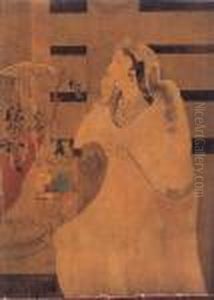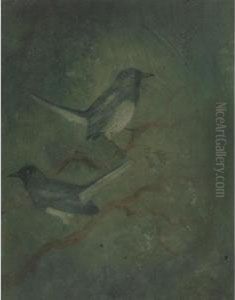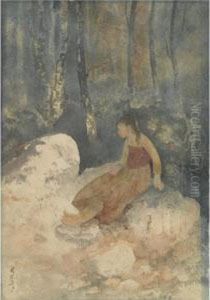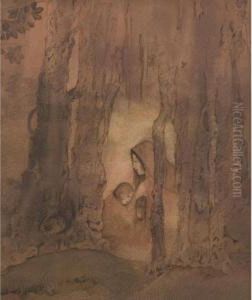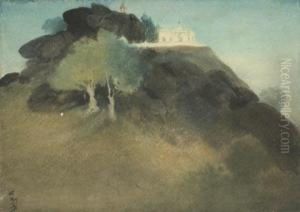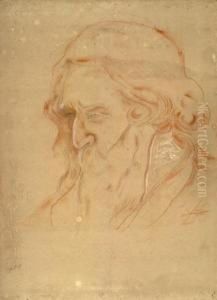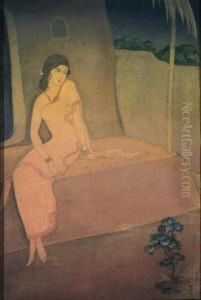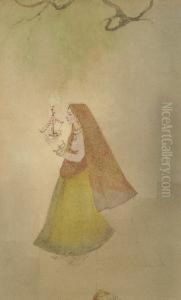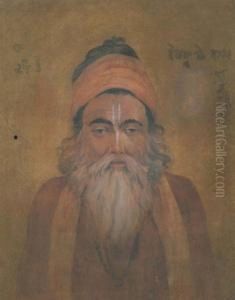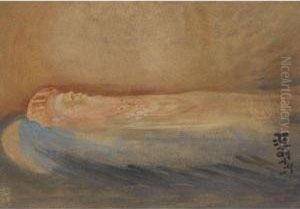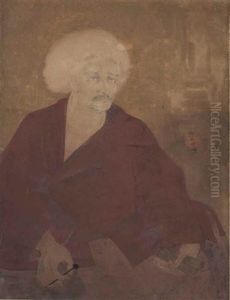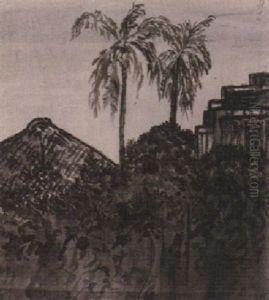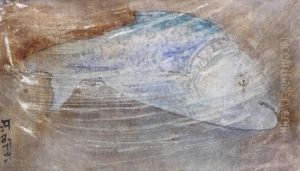Abanindranath Tagore Paintings
Abanindranath Tagore was a principal artist and creator of the 'Bengal School of Art', which sought to promote a nationalist ideology through a revival of Indian artistic traditions. Born on August 7, 1871, in Kolkata (then Calcutta), India, into the Tagore family, known for its contribution to Indian literature, art, and music, Abanindranath was a nephew of the poet Rabindranath Tagore. He was pivotal in redefining Indian art in the late 19th and early 20th centuries, steering it away from the Western influences that had begun to dominate it under British rule. Tagore's approach to art was deeply influenced by Mughal and Rajput painting styles, which he sought to modernize to express contemporary themes and nationalist sentiments. He is also known for incorporating elements from Japanese and Chinese art, reflecting the pan-Asian solidarity in resisting Western imperialism. Abanindranath Tagore's legacy includes not only his paintings but also his role as a teacher and writer. He was the first major exponent of swadeshi values in Indian art, promoting the use of indigenous materials and techniques. His works include famous paintings such as 'Bharat Mata' (Mother India), which became iconic in the context of the Indian independence movement. He was also instrumental in founding the Bengal School of Art, which aimed to develop a distinct Indian style of art, free from the influence of European academic art that was taught in art schools during the British Raj. Tagore's teachings and ideals inspired a generation of artists, including Nandalal Bose, Asit Kumar Haldar, and others, who played significant roles in the development of modern Indian art. He passed away on December 5, 1951, leaving behind a rich legacy that continues to influence Indian art and national identity.
